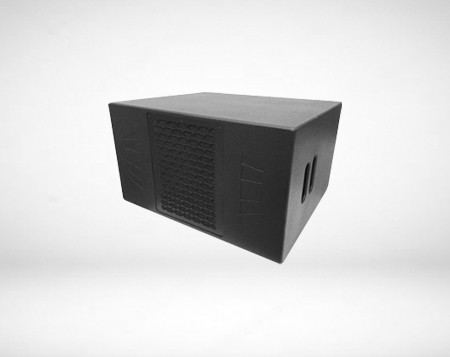source:Industry News release time:2022-11-25 Hits: Popular:Brand bar audio wholesale

1. Power
The sound quality of the speaker is not directly related to the power. Power determines the maximum sound intensity that can be emitted by the speaker, which is just how powerful the sound can be.
According to international standards, there are two ways to label power:
Rated power (RMS: root mean square of sine wave) refers to the maximum electrical power that drives an 8 Ω loudspeaker within the rated range with a specified waveform continuous analog signal, without any damage to the loudspeaker after a certain interval and a certain number of repetitions;
Instantaneous peak power (PMPO power) refers to the maximum power that the loudspeaker can withstand in a short time.
The Federal Trade Commission of the United States stipulated the power calibration standard in 1974: drive an 8 Ω loudspeaker load with two sound channels, and the effective wattage measured when the harmonic distortion is less than 1% in the range of 20~20000Hz is the output power of the amplifier, and its marked power is the rated output power. In order to cater to consumers' psychology, businesses usually mark the instantaneous (peak) power, which is generally about 8 times of the rated power.
The power of the speaker is not as high as possible, and the application is the best. For a room of about 20 square meters for ordinary household users, the real power is 60W (the effective output power of the speaker is 30W × 2) It is enough, but the larger the reserve power of the power amplifier, the better. It is better to be more than twice the actual output power. For example, if the speaker output is 30W, the power amplifier capacity is better than 60W. For HiFi system, the power amplifier driving the speaker is very large.
2. Frequency range and frequency response
Frequency range: refers to the range between the lowest effective playback frequency and the highest effective playback frequency that can be replayed by the audio system;
Frequency response: refers to the phenomenon that when an audio signal output at a constant voltage is connected to the system, the sound pressure generated by the speaker increases or attenuates with the change of frequency, and the phase changes with the frequency. This change relationship (change amount) of sound pressure and phase with frequency is called frequency response, in decibels (dB).
Popular recommendation
RM12 Sound bar wholesaler
2021-07-15D80/D100/D120 KTV brand audio Vendor
2021-07-26XQ48 Bar sound bar Merchant
2021-07-26Resolution 18 Bar speaker Vendor
2021-07-17Bass Reflex Range Bar hall sound Vendor
2021-07-14F221 Marten Audio Merchant
2021-07-14EV O7T Speaker bar Vendor
2021-07-16Resolution 4S Skeletal Bar use audio Vendor
2021-07-16EVO 7TL-215 Sound bar Factory
2021-07-17XD18I Bar speakers wholesale
2021-07-26Resolution 5E Big sound bar Vendor
2021-07-16A2 Dalian Bar Audio Vendor
2021-07-26How to quickly debug the feedback suppressor in the line array speaker system.Bar sound bar sales
2022-05-06Professional audio systems are gradually becoming intelligent.Bar lighting speaker Vendor
2021-11-27Chongqing WUDU Unbounded Space Audio recommends Maarten Audio
2022-09-27Professional Audio Basics.Bar sound brand
2022-04-07Four criteria for judging the quality of professional power amplifiers.Audio equipment bar Processin
2022-03-12What are the steps to debug the KTV bar sound?
2022-03-15Audio system signal transmission, what problems should be paid attention to?
2022-09-07Audio equipment is moisture-proof, don't forget the microphone.Learn Audio in Conference Room
2022-06-17Audio equipment.Conference room sound renovation plan
2023-04-17Zunyi FIRST ROOM bar professional audio equipment is provided by Mateng Audio
2022-10-10Precautions for the use of stage audio
2022-02-14Power amplifier purchase skills [GAEpro audio]Bar special audio manufacture
2022-01-07